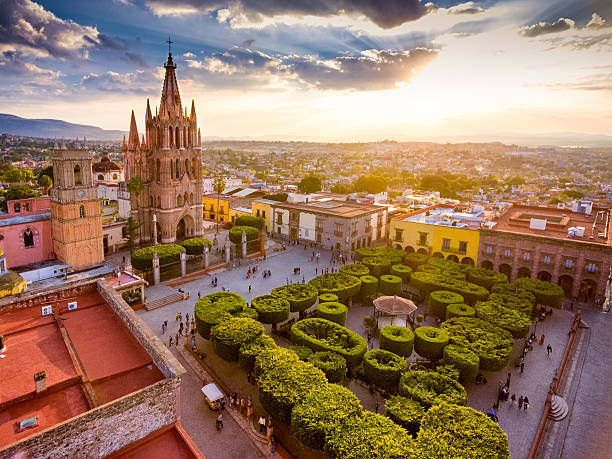The Fairy Tale of Prague
- Sean Conway

- Mar 11, 2021
- 4 min read
It has the best-preserved Old Town in perhaps all of Europe. Called the City of A Hundred Spires, and for good reason, its square is crowned by the iconic double-spired Vyšehrad, the medieval basilica and probably one of the most photographed cathedrals on the continent. Opposite the basilica is the Prague Astronomical Clock with its funky, almost steampunk façade. The square, and the rest of the city, is straight out of a fairy tale, the kind of place Disney tries to recreate in its parks.
The city was spared the bombs of World War II, leaving its ancient beauty intact. Rumor has it that Hitler recognized the city’s compact and lovely aesthetic as worth preserving. In fact, a visit to Prague’s Jewish Quarter teaches us that Hitler actually shipped stolen and hijacked personal belongings from the Jewish victims of the war’s atrocities to Prague with the dream of creating a Jewish museum, dedicated to the saving and displaying of pieces from the “extinct” Jewish race. Let that sink in.
Today, the city’s reigning beauty puts a target on its back as a must-see European city. But like other iconic cities in Europe (Venice comes most prominently to mind), Prague is suffocating under a crush of tourists, a casualty of its own beauty. We were there over the course of a weekend, which might have been a mistake. We encountered several bachelor parties, young men wearing matching T-shirts, arms slung around each other, staggering through the main square and down narrow side streets, often singing: “Hey, baby, I wanna know-oh-oh-oh, will you be my girl?” Not far away might be a bachelorette party. One group was trying to check items off a scavenger hunt list. The bride-to-be had to get a shoulder ride from a stranger. We watched her get lifted up atop some guy’s shoulders but then, both unsteady, she tumbled off and fell, lying on the cobblestones and laughing, though it looked like she’d landed pretty hard.
Near our hotel we stepped into the Basilica of St. James and looked around. At the narthex of the church we spotted something strange hanging above the doorway—I thought it was a stick perhaps, with smaller branches jutting from one end of it. I pulled out my guidebook to look the church up and learned that it was the ancient, severed arm of a thief, mummified and left up on the wall as a warning to future thieves: don’t mess with this church or your arm could be next.
On a couple different days we meandered out to the iconic 14th century pedestrian Charles Bridge, spanning the Vltava River. The bridge is beautiful, lined with statues of saints standing over us like protectors. We stopped and hung out, watched a few street musicians, but again, we were far from the only ones here. The bridge, like the Old Town Square, was packed with people. We crossed to the other side and found what’s called the John Lennon Wall, where residents and visitors have been covering the concrete wall with inspirational graffiti since Lennon’s murder in 1980. Under communist control, western music was forbidden in Prague and Czechoslovakia, so music was shared on the black market, cassette tapes exchanged under cover of night, copies of copies of copies, the quality poor and drowning in hisses and pops. In this manner they discovered The Beatles and Lennon, and the wall, for decades, lives on as a symbol of hope and love and possibility.
On the north side of the river we ascended the steep incline to Kolovratsky Palace and strolled its impressive grounds. We had tickets to an orchestra performing inside one of the Baroque summer palaces. A market was set up outside the venue in a small square, so Christine and I ordered drinks and sat on some stone steps, people-watching and soaking in the last gasp of daylight.
Walking back to our hotel late at night, the Charles Bridge felt almost deserted, though there were still plenty of tourists lingering. The Old Town Square, too, seemed quiet, so we lingered a while longer, took pictures, appreciated the aesthetic of this ancient square with the twin-spired Church of our Lady before Tyn, standing guard over this square since the 14th century. Under the moonlight, with room finally to breathe, the square took on a different feel, the city’s beauty and aura at last shining through that suffocating wall of overtourism.
It’s one of those European cities that might best be saved for off-season, the crush of summer tourists swamping it like an overloaded boat. I picture a lovely fall visit, perhaps, a few quiet during one of the shoulder seasons. If I were to visit during the summer again, I would at the very least avoid a weekend. Spend the weekend in Vienna, maybe, or Budapest, or at any number of smaller Czech towns or villages, and then come into Prague on a Monday or Tuesday. The crowds will be undoubtedly thinner, the drunken bachelor- and bachelorette parties having departed on Sunday evening trains back to London and Milan or wherever they’d come in from. With fewer tourists the city’s true personality becomes clear, like cleaning the grease off your sunglasses with the corner of a T-shirt, the clouded film lifted and Prague suddenly popping with three-dimensional clarity. And not just a fairy tale after all.



Comments